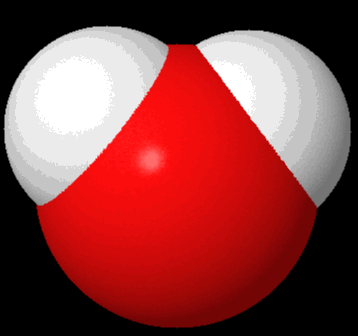Surface Area of a Molecule

A new molecule has been discovered. It is made of two atoms of and one atom of . The surface area of a molecule can tell us loads about the chemical and physical properties of the molecule, hence it is imperative that we calculate it.
If the surface area of an molecule is , then what is ?
Details and Assumptions
-
We can model the molecule as three overlapping spheres as shown in the animation. The white spheres are atoms of and the red sphere is an atom of
-
The radius of Sphere is 40 pm
-
The radius of Sphere is 60 pm
-
The distance between the centers of Sphere and Sphere is 80 pm
The answer is 23400.
This section requires Javascript.
You are seeing this because something didn't load right. We suggest you, (a) try
refreshing the page, (b) enabling javascript if it is disabled on your browser and,
finally, (c)
loading the
non-javascript version of this page
. We're sorry about the hassle.
We can find the solid angles that common part subtends at the centre. We find that the common part subtends 4 π on the centre of Z and 8 5 π on the centre of A. We know that the total solid angle is 4 π , therefore the part on the outside for A and Z can be found out by subtracting from 4 π .
Outside part of A = 4 π − 8 5 π = 8 2 7 π and Outside part of Z = 4 π − 2 ⋅ 4 π = 2 7 π
Therefore total outer surface area = 2 ⋅ 8 2 7 π ⋅ 4 0 2 + 2 7 π ⋅ 6 0 2 = 2 3 4 0 0 π
P.S. To calculate the solid angle, you can draw two circles with radius 60 and 40 and distance between centres as 80, and find the angle that the arc subtends. Then use the formula of solid angle as 2 π [ 1 − cos 2 θ ] , where θ is the angle that the common arc subtends on the centre.